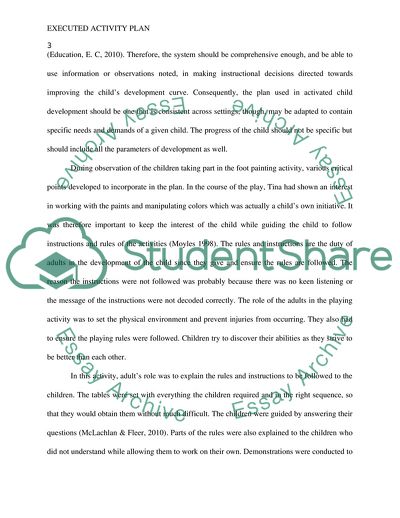Cite this document
(Time to Play in Early Childhood Education Report Example | Topics and Well Written Essays - 2000 words - 1, n.d.)
Time to Play in Early Childhood Education Report Example | Topics and Well Written Essays - 2000 words - 1. https://studentshare.org/education/1761820-executed-activity-plan-with-detailed-evaluation
Time to Play in Early Childhood Education Report Example | Topics and Well Written Essays - 2000 words - 1. https://studentshare.org/education/1761820-executed-activity-plan-with-detailed-evaluation
(Time to Play in Early Childhood Education Report Example | Topics and Well Written Essays - 2000 Words - 1)
Time to Play in Early Childhood Education Report Example | Topics and Well Written Essays - 2000 Words - 1. https://studentshare.org/education/1761820-executed-activity-plan-with-detailed-evaluation.
Time to Play in Early Childhood Education Report Example | Topics and Well Written Essays - 2000 Words - 1. https://studentshare.org/education/1761820-executed-activity-plan-with-detailed-evaluation.
“Time to Play in Early Childhood Education Report Example | Topics and Well Written Essays - 2000 Words - 1”. https://studentshare.org/education/1761820-executed-activity-plan-with-detailed-evaluation.


